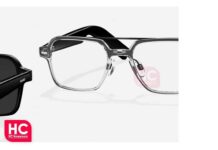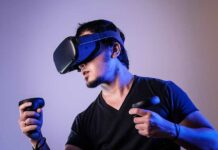Forget wristbands – The Ear is the new Wrist.
There’s a new bubble in technology – the wristband. Fuelled by Nike’s success, Jawbone’s on the Up, Polar’s in the Loop, Sony’s trying to Force its way into the game, while Fitbit’s aiming to stay as number One. (If you’ve ever wondered how branding executives choose their product names, that’s how.) Analysts are falling over each other to estimate how large the market will be by 2018. They’re wetting themselves at the prospect of smart watches, seeing the wrist as the saviour of the high tech industry now that smartphones have lost their Shine. (Which has nothing to do with the wrist, but that’s another story.) Currently Credit Suisse holds the prize for unwarranted optimism with a prediction of a market value of up to $50 billion for wearables in 2018. I think they’ve all missed the largest potential market for wearables – a category I’m going to call Hearables. The ear is the new wrist.
Analysts making these predictions almost invariably assume the wearable market is intrinsically linked with the smartphone market – currently around a billion units per year and worth over $250bn. To them, wearable seems to be mostly about smart watches and phones which extend small parts of the phone experience to something we wear. They ignore the fact that we still purchase smartphones to make calls. All of those calls send audio to our ears. As well as voice, hundreds of millions of people use their phones for music, as evidenced by the ubiquitous cables trailing from ears. Sound drives the bulk of our technology use and earbuds are the only piece of wearable tech to have gained ubiquity and social acceptance. These devices are about to undergo a revolution in capability, getting rid of their cables and giving them the opportunity to be the standard bearer for wearable technology.
I’m currently writing a new market forecast report for connected consumer wearable technology. It argues that the biggest potential market for connected wearables will not be for devices we put on our wrists, but the ones we put in our ears. By 2018 it suggests that we’ll be spending over $5billion on Hearables. Let me know if you’d like a copy of the report when it’s complete.
The current interest in the wrist is a result of years of desperation within the watch industry. Shortly after digital mobile phones started displaying time, a younger generation began to rely on their phones rather than a watch to tell them the time. Mass market watch ownership is a relatively small slice of our history, starting after the First World War and only becoming the norm for the industrialised world in the 1930s. It looks as if the watch’s hold on our wrists may not last a century. By 2000, mobile phones had precipitated a decline in overall watch sales which has continued unabated. ABI research recently reported that only 47% of people regularly wear a watch. Companies like Casio have attempted to stem the tide with FM radio watches, G-Shocks and increasingly complex functions, all to no avail. The world is moving to naked wrists.
The industry’s one remaining play has been to invent the concept of the smartwatch – a device which connects to our smartphones to tell us of incoming phone calls or messages. It is a category which has had very limited success. The poster child is the Pebble watch, which has the accolade of being the most funded project on Kickstarter, raising over $10m. Major manufacturers from both the watch and the mobile phone sector have jumped on the bandwagon, but customers are not buying into the vision. Instead Sony and Samsung are allegedly filling warehouses with unwanted products. Even the ever-retreating prospect of an iWatch seems to be losing its appeal.
The one positive area of hope for those after our wrists has been that of fitness bands. Nike’s Fuel played to a certain fitness fashion demographic and has been promptly copied by most other companies in the personal fitness space. These products generate data about what we do which can be used to nudge us into reaching fitness goals. It can also be uploaded via a smartphone to a remote server for further analytics. Whilst compelling for a small segment of users, most report that after a few months the novelty fades and at best they treat the wristband as a basic pedometer. Or ironically, use it as a digital watch.
The challenge that any wrist-worn device has is to provide the user with a stream of new and interesting information. If we turn our attention to the ear, that limitation disappears. Ear buds may be simple tech today, but they can stream an endless supply of new music. As they don’t rely on a sensor, but are just a carrier of content, the content they supply can remain eternally fresh and compelling – they don’t need constantly new and novel applications to keep us hooked. However, the way they work, as well as what else they are able to do is about to change. It will stimulate innovation, hopefully making them more interesting and more desirable.
Ear buds need to be small and comfortable. They currently have wires to your music player as existing wireless standards take too much power for them to run off internal batteries. It is a problem that the hearing aid industry has been working on for many years. They would like to find a way to allow hearing aids, which use sub-miniature zinc air batteries, to connect to mobile phones and personal music players. The Hearing Aid industry’s trade body – EHIMA, has just signed a Memorandum of Understanding with the Bluetooth SIG to develop a new generation of the Bluetooth standard which will reduce the power consumption for wireless streaming to the point where this becomes possible, adding audio capabilities to Bluetooth Smart. Whilst the primary purpose of the work is to let hearing aids receive audio streams from mobile phones, music players and TVs, it will have the capability to add low power audio to a new generation of ear buds and headsets.
That won’t be the limit of what these new ear buds will be able to do. Bluetooth Smart is already the de facto choice of wireless for wrist bands and wearable devices. It was designed to support sensors which collect and transmit data – what’s known as “exposing state”, on an intermittent basis. It means that it is possible to design earbuds which also monitor what we do.
Few people realise that the ear is a remarkably good place to measure many vital signs. Unlike the wrist, the ear doesn’t move around much while you’re taking measurements, which can make it more reliable for things like heart rate, blood pressure, temperature and pulse oximetry. It can even provide a useful site for ECG measurement.
Some products have already been demonstrated that take advantage of this. At the Consumer Electronics Show in January, Intel showed some prototype ear buds which incorporated sensors from InvenSense which detect your mood and help select your music based on that. Since them InvenSense has signed a partnership deal with Sonin – a leader in sub-miniature hearing aid microphone which will leverage InvenSense’s MEMS technology. Dublin-based Zinc Software have raised just under $1million for a heart rate variability (HRV) device for biofeedback, InnerBalance have a similar clip-on. iRiver have a neat set of wired earbuds which include a heart rate sensor using sensor technology from Valencell, and even Apple have jumped into the field with a recent patent application.
The X-prize foundation is currently running the Qualcomm Tricorder Competition – a challenge to develop a handheld, medical analysis device capable of diagnosing your state of health by measuring five vital signs and diagnosing more than fifteen common diseases. I’m involved with one of the UK teams – SCANurse, which sees a wearable earpiece as an important part of solving that challenge.
We’re seeing the first few signs that developers are beginning to understand that the ear has more commercial value than the wrist. As well as the ones mentioned above, Bragi – a German company, has just succeeded in funding their Dash earbuds through a Kickstarter campaign. They’ve managed to raise over $3.3m – the third highest amount ever raised for a hardware product and the greatest funding for any outside the US for their wireless earbuds. If you want to see where Hearables are going, watch their promotional video – it is the best demonstration I’ve come across of wearable tech that understands the consumer. If all goes well they’ll be in almost 12,000 sets of ears by the end of the year.
There are plenty of problems to be solved before Hearables become mainstream, but none that are likely to be insurmountable. Today’s hearing aids already contain an amazing level of technical complexity, miniaturized beyond anything you’ll find in a smartphone or tablet. The capabilities exist; the standards are coming. Now we need to add the vision of innovative companies like Bragi to turn Hearables into the flagship sector of wearable technology.
About the author
This article has been written by Nick Hunn keynote speaker at our past conference in Munich. It first appeared on his blog. Nick is the founder and CTO of WiFore Consulting. For the past twenty years he has been closely involved with short range wireless and communications, designing technology that helps to bring mobility to products, particularly in the areas of telematics, M2M, smart energy and mobile health. Over the past few years he has helped Onzo roll out connected home systems which have collected over three trillion domestic energy readings.
















